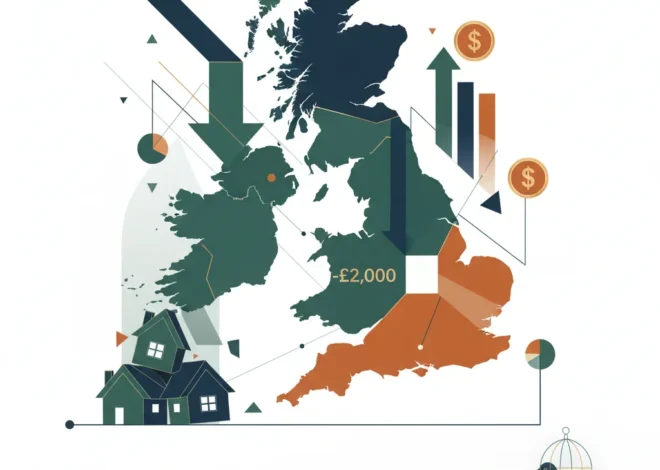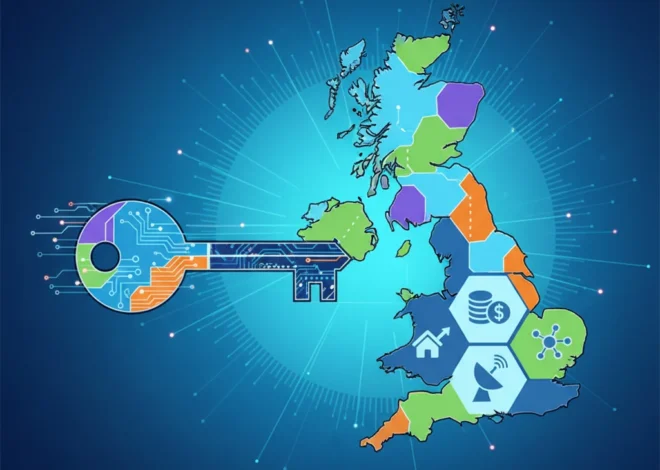
The £500M Energy Debt Bailout: A Necessary Lifeline or a Risky Economic Precedent?
Introduction: The Ticking Time Bomb of UK Energy Debt
In the intricate landscape of the modern UK economy, few issues are as pervasive and pressing as the escalating crisis of energy debt. For millions of households, the choice between heating and eating has become a stark reality, a daily struggle exacerbated by volatile global markets and persistent cost-of-living pressures. Now, the energy regulator, Ofgem, has stepped into the fray with a bold and controversial proposal: a one-off scheme to cancel approximately £500 million of debt for the most vulnerable customers. While this plan offers a crucial lifeline to those drowning in arrears, it comes with a significant catch—the cost will be socialized, spread across the bills of every other energy consumer in the country.
This decision sits at a complex intersection of social policy, market regulation, and fundamental economics. It forces us to confront difficult questions about fairness, responsibility, and the role of the state in a market-driven system. Is this a pragmatic solution to prevent a widespread social crisis, or does it set a dangerous precedent, creating a moral hazard that could have long-term repercussions for the finance and utility sectors? This article will dissect Ofgem’s proposal, exploring its mechanics, its potential impact on the stock market and investors, and the broader implications for the future of financial regulation and social support in the UK.
The Anatomy of the Crisis: How Did We Get Here?
The current mountain of energy debt did not appear overnight. It is the culmination of a perfect storm of economic factors. The post-pandemic economic recovery, coupled with the geopolitical shock of the war in Ukraine, sent wholesale energy prices soaring to unprecedented levels. While government support schemes provided temporary relief, they could not entirely shield households from the impact. As of early 2024, total energy debt in the UK had swelled to a staggering £3.1 billion, a figure that highlights the scale of the challenge. According to a report by Citizens Advice, an estimated 5.3 million people were living in households in energy debt, a situation that has profound consequences for mental health, financial stability, and overall well-being.
Ofgem, as the independent regulator for Great Britain’s energy markets, is tasked with protecting the interests of consumers. This mandate often involves a delicate balancing act: ensuring that energy suppliers remain financially viable while preventing consumers from being exploited. The proposed debt cancellation scheme is a direct response to the fear that this debt pile is becoming unmanageable, posing a systemic risk to both vulnerable individuals and the stability of the energy retail market.
A Turning Tide? Unpacking the UK's Surprise Inflation Drop and What It Means for the Economy
Deconstructing the Proposal: A £17 Levy for a £500M Problem
Ofgem’s plan is a targeted, one-time intervention designed to provide what it calls a “fresh start.” The core of the proposal is the creation of a fund to write off the long-term, unpayable debts of customers who are on benefits and have been in arrears for an extended period. The mechanism for funding this initiative is a levy applied to all other electricity and gas bills. While the final amount will depend on the number of participating suppliers, the initial estimate is a charge of approximately £17 per household, spread over a 12-month period.
To understand the financial mechanics, it’s helpful to break down the key components of the scheme as outlined in Ofgem’s official consultation document. The table below provides a simplified overview of the proposed structure.
| Component | Description |
|---|---|
| Total Fund Size | Approximately £500 million. This represents a significant portion of the most problematic “bad debt” on suppliers’ books. |
| Eligibility Criteria | Targeted at customers receiving means-tested benefits who have been in debt for over two years and are not on a repayment plan. |
| Funding Mechanism | A one-off levy added to the standing charge or unit rate on all other domestic consumer energy bills. |
| Estimated Cost Per Household | Around £17 per year, or £1.40 per month, though this is a preliminary estimate. |
| Implementation Timeline | Proposed to run for the 2024-2025 financial year. |
This approach effectively transfers the cost of bad debt from the energy suppliers’ balance sheets directly to the wider consumer base. Proponents argue this is a fair and efficient way to handle a collective problem, preventing the alternative scenarios of either supplier collapse or the aggressive, and often traumatic, pursuit of unpayable debts from vulnerable people.
The Investor’s Angle: Regulatory Risk and the Utility Stock Market
For those involved in investing and trading, particularly in the utilities sector, Ofgem’s announcement is a double-edged sword. On one hand, the removal of £500 million in “bad debt” from the system is a net positive for the balance sheets of energy suppliers like Centrica (British Gas) and SSE. Bad debt is a significant operational cost and a drag on profitability. Wiping a portion of it clean improves cash flow projections and reduces provisioning requirements, which could theoretically be bullish for the stock market valuation of these companies.
However, the market often reacts more strongly to the method than the outcome. This intervention highlights the immense regulatory risk inherent in the UK’s privatized utility model. Investors prize predictability, and a regulator stepping in to unilaterally restructure liabilities and impose levies introduces a significant element of uncertainty. It signals that in times of social or political pressure, established commercial norms can be overridden. This “political risk” can deter long-term investment, increase the cost of capital for energy firms, and make their stocks less attractive to institutional investors who may see the sector as a political football rather than a stable, dividend-paying asset class.
The core tension for the finance community is whether this move makes the sector more or less stable. By preventing a potential wave of customer defaults and the associated negative press, it could be seen as a stabilizing force. Conversely, by demonstrating a willingness to impose costs directly onto the consumer base to solve a social problem, it may open the door to future, more costly interventions. The £2.1 Billion Breach: How the Jaguar Land Rover Hack Rewrote the Rules of Financial Risk
Beyond the Bailout: The Search for Sustainable Solutions
While Ofgem’s proposal addresses the immediate symptom—unmanageable debt—it does little to cure the underlying disease. A sustainable solution requires a multi-faceted approach that goes beyond one-off levies. Experts and policymakers are exploring several avenues that could build a more resilient system for the future, many of which involve innovations in financial technology and policy.
One of the most discussed long-term solutions is the implementation of a “social tariff.” This would be a permanently discounted energy rate for low-income households, funded either through general taxation or a more structured, transparent levy on bills. It would provide certainty and affordability, preventing debt from accumulating in the first place. Another critical area is energy efficiency. Improving the UK’s housing stock, much of which is old and poorly insulated, would permanently reduce energy consumption and bills for the most vulnerable, representing a true long-term investment in poverty reduction and environmental goals.
Here, fintech could play a transformative role. Advanced data analytics could help suppliers identify customers at risk of falling into debt far earlier, allowing for proactive intervention with tailored support and flexible payment plans. Smart meters, when combined with intelligent apps, can empower consumers to manage their usage more effectively. Looking further ahead, some futurists even speculate about the potential for blockchain technology to create more transparent and efficient systems for distributing social support payments, ensuring funds are used as intended and reducing administrative overhead. While still nascent, these technological avenues offer a glimpse of a future where the intersection of banking, technology, and social policy creates more robust and equitable outcomes.
Conclusion: A Controversial Stopgap on a Long Road
Ofgem’s £500 million debt cancellation plan is a bold, necessary, and deeply controversial measure. It represents a pragmatic attempt to defuse a social and financial time bomb, offering immediate relief to thousands of households on the brink. It acknowledges the market’s failure to protect the most vulnerable during an unprecedented economic shock. However, it is not a panacea. The decision to fund this relief through a universal levy on all other billpayers raises legitimate questions about fairness, economic precedent, and the long-term role of regulation in the UK economy.
For investors, finance professionals, and business leaders, the key takeaway is the reinforcement of regulatory risk as a primary consideration in the utilities sector. The plan also serves as a powerful reminder that major social challenges inevitably intersect with market economics, forcing policy innovations that can reshape industries. Ultimately, this debt write-off should be seen not as a final solution, but as a costly stopgap—a measure that buys valuable time. The real work lies ahead: building a more resilient, efficient, and equitable energy system that doesn’t require emergency interventions to keep the lights on for everyone.

